Bedeo develops retrofit battery and motor kit for old Defenders
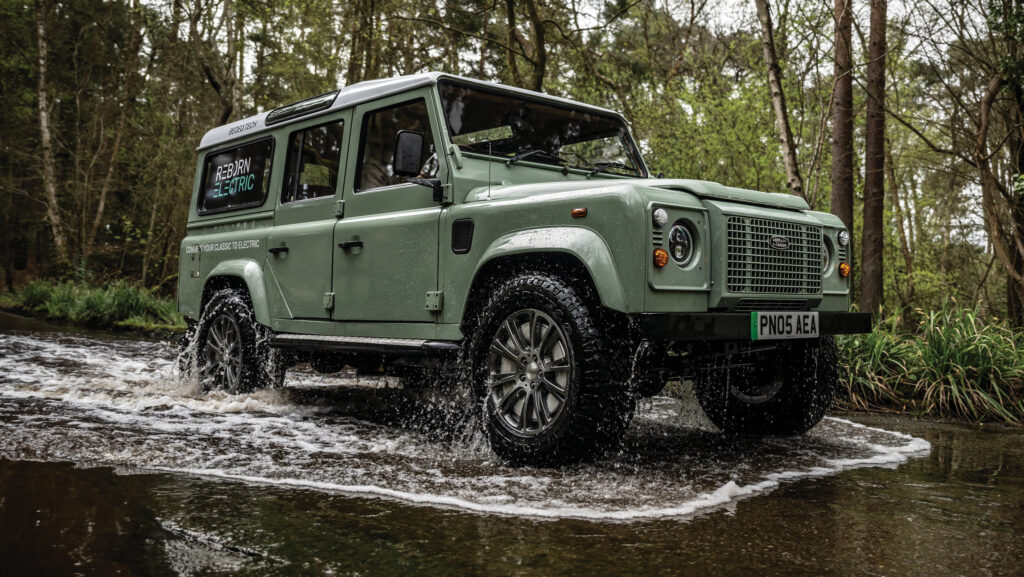
Land Rover Defender 90s and 110s can now be electrified with in-wheel motors thanks to a retrofit kit from electric drivetrain specialist Bedeo.
The “Reborn Electric: Icons” series will eventually encompass a range of classic car conversions, but it’s aged Defenders that the British company is focusing on first.
These are fitted with a 75kWh battery that provides an estimated 153 mile range and motors which have a combined power output rated at 483bhp.
See also: On test: Land Rover’s plug-in hybrid Defender
Bedeo Defender specs
- Battery 75kWh
- Estimated range 153 miles
- Power 360kW (483hp)
- Charging time (0-100%): AC 7kW: 12 hours / AC 22kW: 5 hours / DC 50kW: 1.5 hour
Unlike other, simpler electric vehicle (EV) conversions that involve replacing the engine and transmission but retaining the standard axles and wheels, Bedeo’s system goes further by also stripping the Defender of its driveshafts.
This leaves individual motors installed on each wheel to provide permanent four-wheel propulsion.
These are produced by in-wheel motor specialist Protean Electric, which is owned by the Bedeo Group and holds more than 200 patents for its technology.
“Usually when you’re off road, you want to be able to lock the differential so that both wheels turn at the same speed and you don’t just spin out,” says Protean Electric chief technical officer Stephen Lambert.
“We don’t need any of that – we just have independent drives in each wheel. So if one wheel spins, it’s not taking torque away from another. Whichever wheel can get traction will be able to propel the vehicle.”
This avoids the need for any driver intervention, meaning the transition from on- to off-road is seamless.
“The only disadvantage is you can’t put all your torque to one wheel or all your torque to the front or the rear, for example, which you can do on some extreme four-wheel drive vehicles.”
Other off-road tasks such as wading are apparently unaffected by the conversion thanks to the watertight design of the in-wheel motors.
These have completed an extensive 12-month testing programme over 100,000km to ensure they are sufficiently robust for on- and off-road applications, and Bedeo reckons they should outlive any vehicle they are installed on.
The motors are fitted alongside an unorthodox brake arrangement inside the 18in wheels.
This sees the brake discs attached to the spinning outside part of the motor in an inside-out brake disc and calliper configuration which, according to the company, makes it easier to service when pads need replacing.
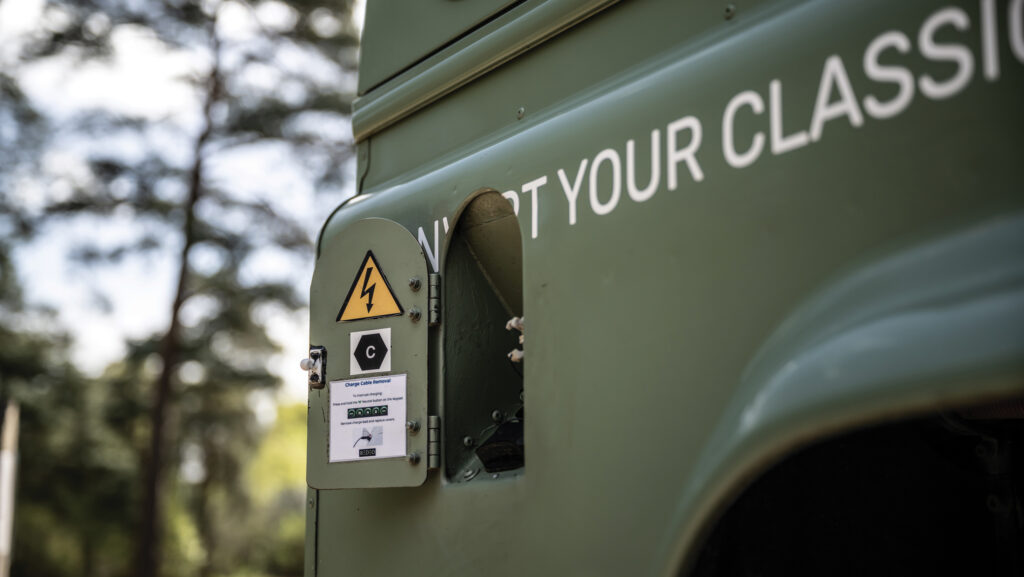
© Bedeo
Fitting the kit
Bedeo works with partner installers to fit the in-wheel motor technology. Typically, it expects a customer to own the vehicle they wish to convert and work with the partner garage to arrange fitment.
The idea behind this structure is that it has the scope to offer customers additional automotive services such as a broader refurbishment, including the paintwork and/or upholstery.
Pricing is therefore dependent on the workshop fitting the equipment, with Bedeo selling the kit to partner fitters at a fixed price and the garage then pricing the job accordingly.
The retrofit process involves stripping the engine and the rest of the powertrain out of the vehicle.
Though some of the power distribution components go in the engine bay void, along with a few high-voltage elements, this opens up the option of putting in a frunk (front storage area) to make use of the space.
The original axles and differentials are also removed and replaced with new axles, but the suspension remains unaffected. Motors, each weighing 39kg, are then installed inside the wheels.
Once completed, the kerb weight will be almost identical to that of the original car.
The port for the 75kWh battery pack is fitted in place of the fuel cap and it can charge at rates up to 50kW.
With a fast charger the battery can be completely replenished in an hour and a half; at 22kW it will fully charge it in five hours, and using a 7kW wallbox charger takes 12 hours.
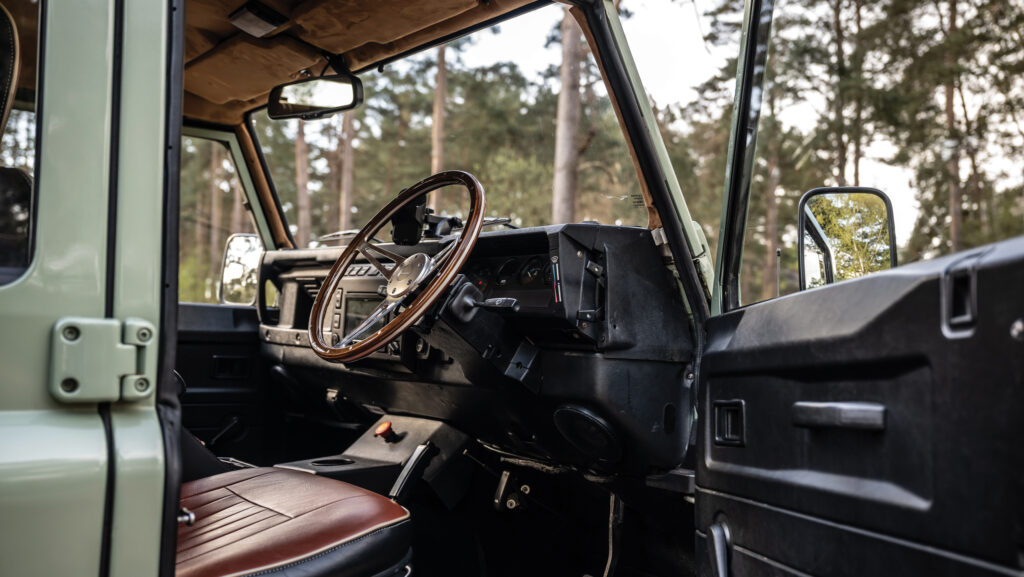
© Bedeo
Interior updates
As well as a mechanical overhaul, there are also a couple of minor changes to the interior. This includes removing the gear stick and clutch pedal, though the regular handbrake remains in situ.
A drive selector panel (drive, neutral, reverse, eco) is also added to the dash, which lights up green when the car is ready to drive, and battery information is displayed on the left side of a new rearview mirror.
This otherwise works as normal and, surprisingly, doesn’t obscure the driver’s view as much as you’d expect.
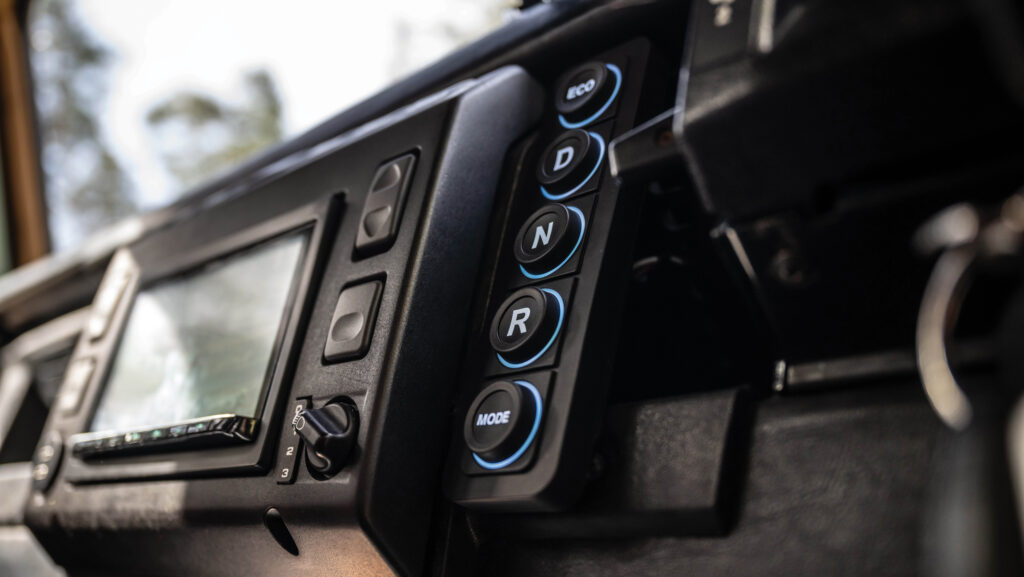
© Bedeo
The drive is very similar to that of a conventional setup with an engine and automatic transmission.
Unlike new electric cars that take off as soon as you put your foot down, the power delivery is more measured and the car refrains from shooting away. This makes handling more predictable and familiar.
Off-road, the four-wheel drive system operates without the need for drivers to stop and change any vehicle settings.
The in-wheel motors make it simple to operate, quiet inside and, apart from feedback from the road, vibration free.
In the current market, electric vehicles tend to be more expensive to purchase than their equivalent petrol or diesel counterparts.
But over the life of an electric vehicle, total cost of ownership is expected to be cheaper thanks to lower fuel, servicing and maintenance costs.
Bedeo hopes its retrofit powertrain will give vehicles a second life, saving owners having to replace it or spend money on engine repairs.
The company won’t yet be drawn on price, but it will “come up a little more expensive than existing platform kits”.
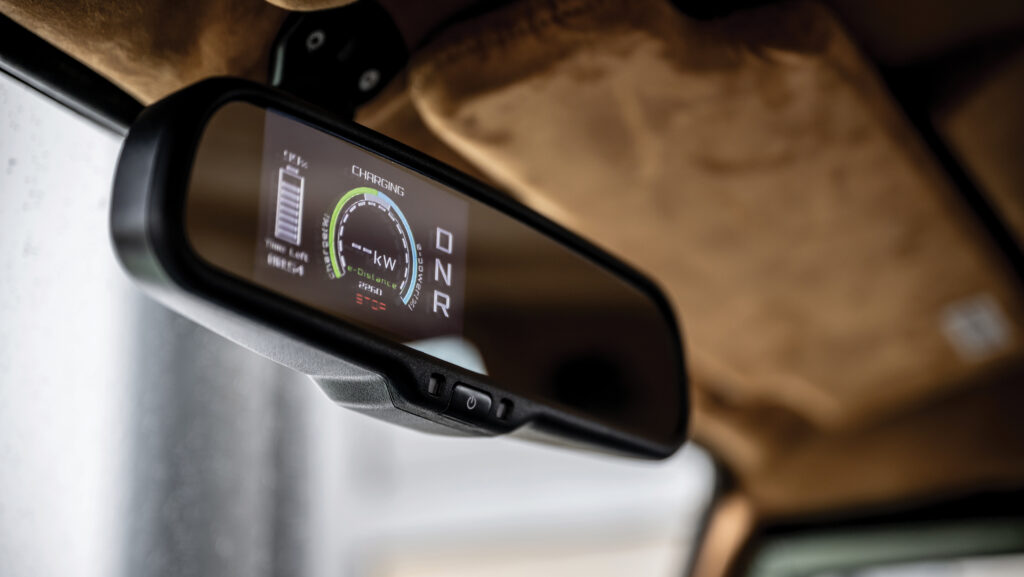
© Bedeo
Bedeo background
In 2021, Bedeo acquired in-wheel motor maker Protean Electric to form the Bedeo Group.
The company’s core business involves adding its motors to vans such as the Vauxhall Movano, Peugeot Boxer and Citroen Relay.
The principle for these is the same as the Defender kit. But the big difference is that the original powertrain is kept in place, with the diesel engine acting as a range extender.
The engine continues to power the front axle and the in-wheel motors power the rear axle using electric.
This approach means the electric element can be used in urban environments or for daily jobs until the battery is depleted. After this, the driver can switch to diesel power and use the vehicle like a normal van.
Doing so can significantly reduce carbon emissions emitted from these vans, with the system acting as a bridge between full electrification and a traditional diesel powertrain.
In this segment, the Bedeo technology is implemented to extend the life of the vehicle and save owners money.
Vans are often kitted out with expensive, specialised racking, so adding in-wheel motors that extend their life is a potentially cheaper alternative to buying and equipping a new vehicle.

